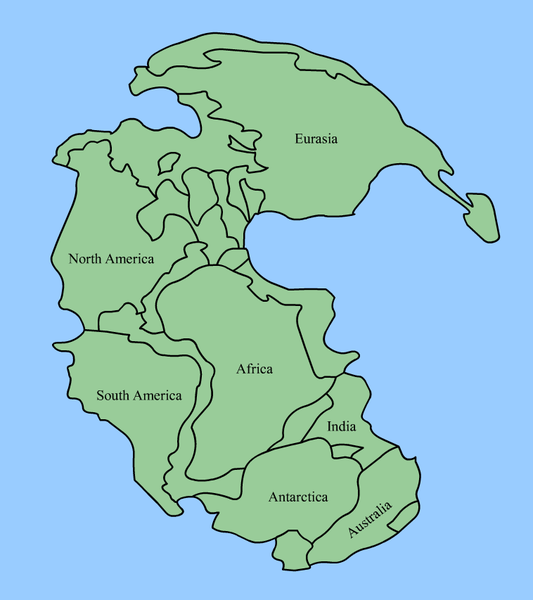Our Environment Contents
1. Evolution
Massive shifts in the continental masses also affected the evolution of life.
Download video: MP4 format | Ogg format | WebM format
550 million years ago small landmasses were spread out around the equator. This was a factor in the explosion in the diversity of life, which marked the Cambrian Event. Shallow, warm, equatorial seas were the ideal environment for the diversification of life. Evidence from the rocks of this time, especially the Burgess Shale in the Rockies, Canada, shows a rich diversity of life.
435 million years ago, the largest landmass, Gondwana, crossed the South Pole. This movement sparked an ice age and global cooling which affected open ocean faunas and caused a massive extinction of species.
The largest extinction happened 250 million years ago and has a more complex explanation. All the world's continents were together in a super continent (called Pangaea). This caused a change in patterns of ocean circulation and the sea level rose, which brought oxygen deficient waters onto the shallow shelf seas. On land, temperature variation was extreme and fewer species could survive there. There is also evidence for very large scale volcanism in Siberia, which would have had serious effects on climate. Scientists are still trying to unravel the exact causes of this extinction.

Over the last 250 million years Pangaea split up, and plate tectonics spread the continents around the globe to their present positions. As sea levels varied, land bridges sometimes emerged, which allowed animals and plants to move between one continent and another. Some continents such as Australia have been separated from other continents for millions of years. In this time, some animals evolved into unique forms (e.g. the kangaroo) while others evolved to fill niches similar to those found elsewhere. One example of the latter is the marsupial lion (now extinct) of Australia and the African lion: they performed similar functions and looked very similar but were not related. Organisms evolving separately on different land masses increased the global diversity.
Since Pangaea split, two events have been of particular significance for evolution: the great extinction of 65 million years ago and the emergence of humanoids over the last 33 million years.
How have the main land masses of the Earth changed, and how has this affected evolution?